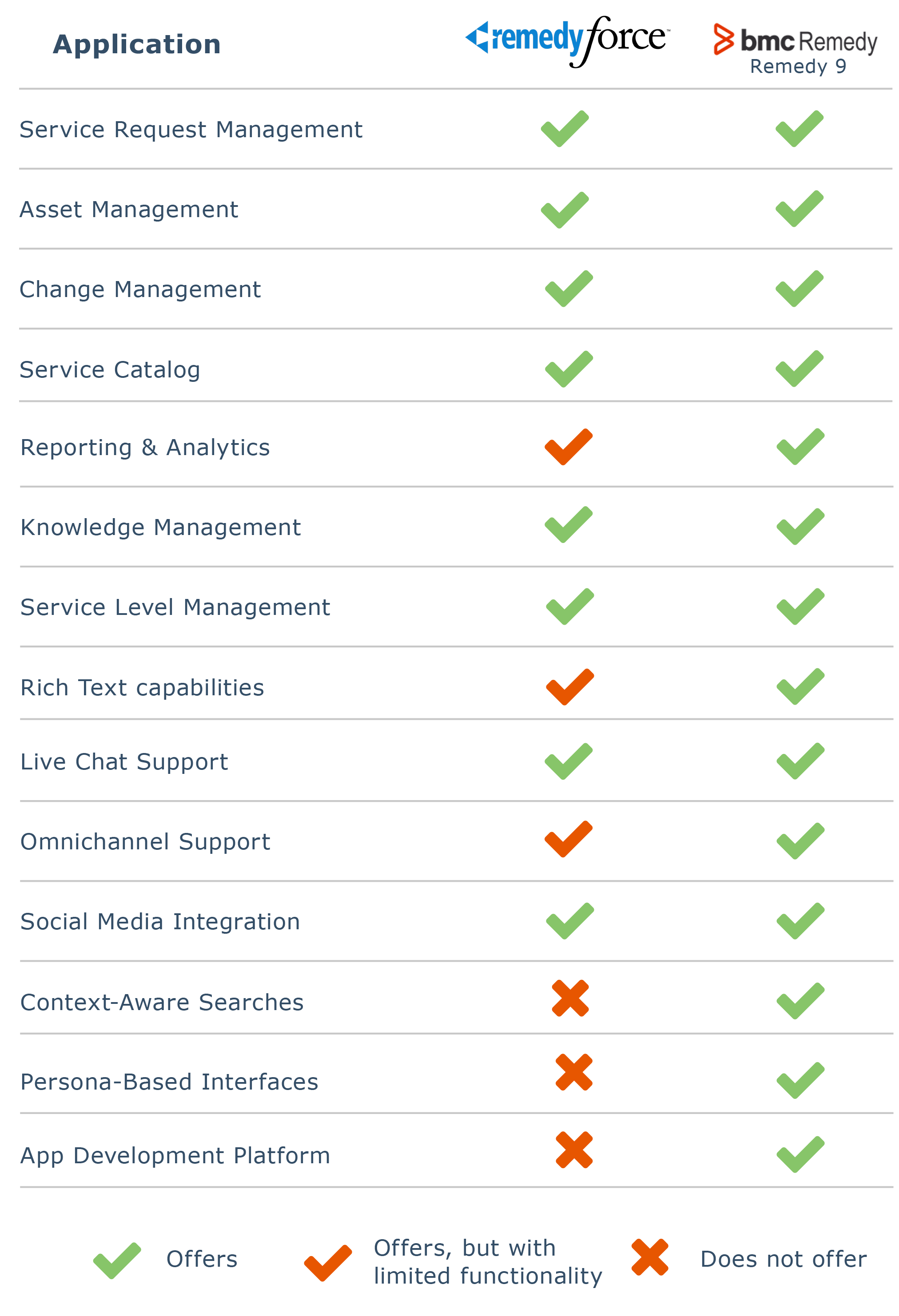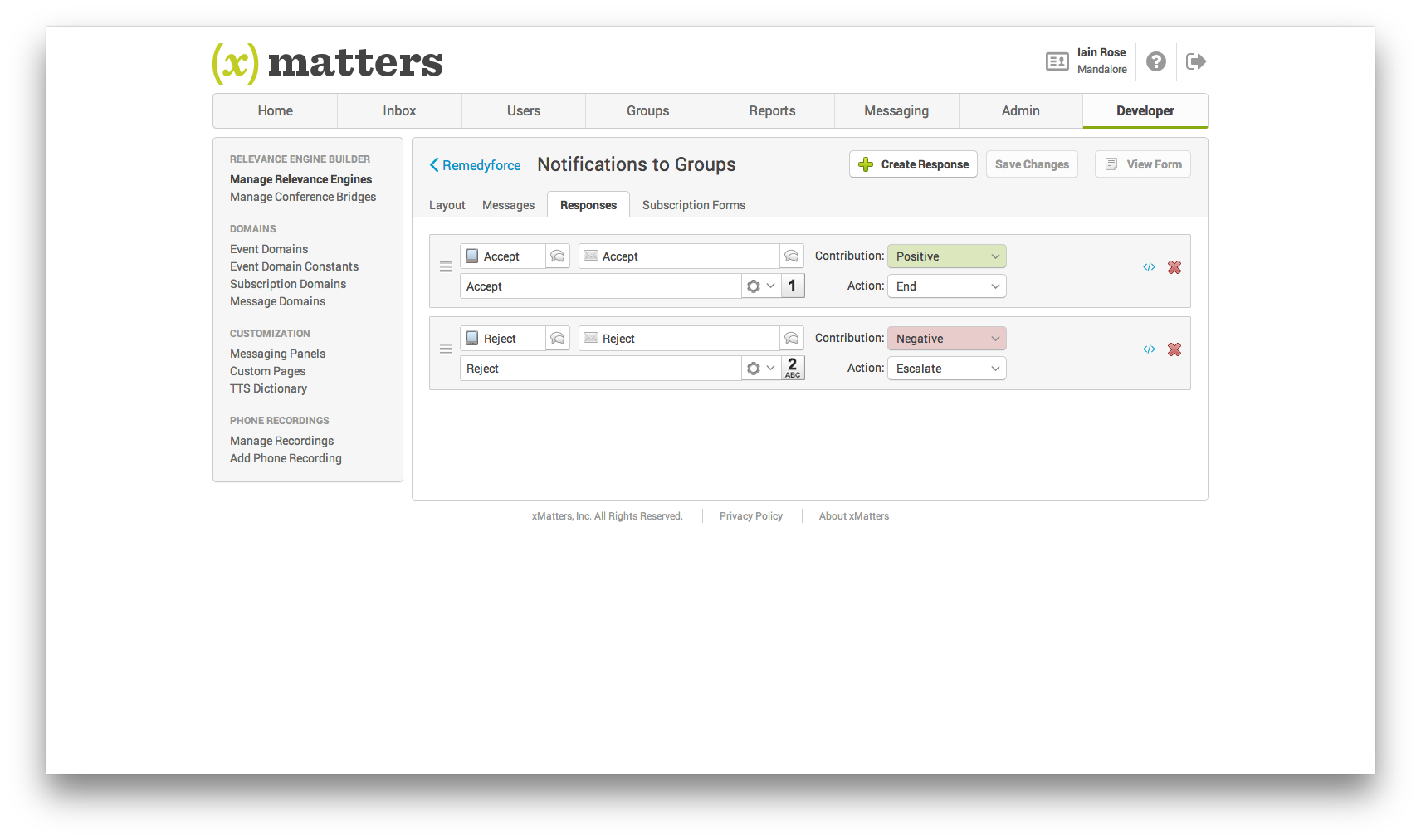Remedy Software: A Guide to Remedyforce and Remedy 9
Remedyforce and Remedy 9 are two IT services management platforms by Remedy software. Although they have similar names and share similar functionality, the two products are quite different.
In this report, we’ll compare Remedyforce with Remedy 9, and help you decide if either is your best choice for an IT services management (ITSM) solution.
Here’s what we’ll cover:
Evolution of the Remedy Brand
Applications: Remedyforce vs. Remedy 9
System Architecture: Remedyforce vs. Remedy 9
Business Goals: Remedyforce vs. Remedy 9
Mục lục bài viết
Evolution of the Remedy Software Brand
Remedy is one of the biggest names in ITSM software. It’s also one of the oldest. The original Remedy Corporation was founded in 1990. Since then, the name has changed twice: once when it was purchased by Peregrine Systems in 2001, and again in 2004 when BMC Corporation purchased it from a bankrupt Peregrine.

BMC has owned and improved the Remedy brand since 2004
The primary application of the original Remedy ITSM platform is its Action Request (AR) server: the system’s “nuts and bolts.” The AR server executes all the standard service desk tasks, and uses separate “server clients” to add functionality.

Interface of the original Remedy AR server
When BMC acquired Peregrine, the AR server was already popular among IT pros. In fact, it’s still popular today: BMC has continued to upgrade the AR server application, and it’s now at the heart of BMC’s Remedy IT Management Suite, known more commonly as “Remedy 9” (to denote the current version number).
In 2010, BMC launched Remedyforce, expanding the Remedy line of products to the cloud. Remedyforce is built on the Salesforce cloud-computing platform. It’s an attractive choice for companies wanting a cloud-based ITSM platform—especially those already using Salesforce for their sales and marketing.
For Salesforce users, integration with the platform is simpler, and the system is easier to learn because it follows similar workflows with similar user interfaces.
As Remedyforce user J. María summarized in a review submitted to SoftwareAdvice.com: “The combination of Salesforce and BMC is a strong win-to-win.”
Applications: Remedyforce vs. Remedy 9
Remedyforce and Remedy 9 offer many of the same core ITSM applications. It’s important to remember, however, that they often have differences “under the hood.”
For example, both platforms include a service request management application, but Remedy 9 lets administrators choose from and create a larger variety of rules and logic. It offers more flexibility when determining how service requests get managed, e.g., prioritized and routed.
 The chart above compares the applications each system offers out of the box—but that doesn’t mean the functionality of the products can’t be expanded. For example, since Remedyforce is built on the Salesforce platform, it’s compatible with a range of add-on applications developed for that platform by BMC and by third parties.
The chart above compares the applications each system offers out of the box—but that doesn’t mean the functionality of the products can’t be expanded. For example, since Remedyforce is built on the Salesforce platform, it’s compatible with a range of add-on applications developed for that platform by BMC and by third parties.
The chart above compares the applications each system offers out of the box—but that doesn’t mean the functionality of the products can’t be expanded. For example, since Remedyforce is built on the Salesforce platform, it’s compatible with a range of add-on applications developed for that platform by BMC and by third parties.

Remedyforce has additional applications available from third-party developers
Xmatters is one popular add-on for Remedyforce. It adds SMS functionality and a variety of different notification and escalation options. It also lets Remedyforce administrators tailor specific (automated) messages to specific devices and employees.

Xmatters screen showing basic notification options
A wide variety of vendors sell Remedyforce add-ons, and some of them are quite creative: Bunchball’s Nitro for Remedyforce Gamification, for example. It seeks to foster healthy competition among agents by adding gaming elements to their workloads, awarding points as they progress.

Nitro for Remedyforce screen showing challenges agents can compete in
System Architecture: Remedyforce vs. Remedy 9
The fundamental difference between Remedyforce and Remedy 9 is their software architecture. This affects how the systems are deployed, integrated and used.
Remedyforce is the simpler of the two products. Since it’s a cloud-based system, it can be purchased and deployed the same day. There is no need to purchase or install new servers to run it—in contrast with on-premise solutions.

Diagram showing how all Remedyforce applications run
on top of the Salesforce cloud platform
Pauline, another Remedyforce user, notes this system is especially easy to use for existing Salesforce customers.
“The ROI on this tool is strong if you are using Salesforce as your CRM platform. The tool has great capabilities, and you don’t have to hire an army or bring your team up on another set of tools to leverage all this has to offer,” she says.
Remedy 9 has a much higher degree of configurability. It allows for both cloud and on-premise deployments, as well as deployments that cover multiple sites across many physical locations.

Diagram of the shared-service architecture of BMC Remedy 9
Remedy 9 uses a “Mid Tier” shared-service architecture. The mid tiers are intermediary servers that handle the service requests of a particular group of users. These can then be rearranged or reorganized to tailor the entire system’s performance to specific goals.
Business Goals: Remedyforce vs. Remedy 9
Generally speaking, Remedyforce is a better fit for small to midsize businesses (SMBs), while Remedy 9 is a better fit for enterprises.
However, the complexity of a company’s IT ecosystem is not always related to its size. Companies will often prioritize one ITSM goal over another, regardless of how big they are.
This table provides a quick comparison between Remedyforce and Remedy 9 based on a selection of common business goals:

(855) 998-8505.
Are you researching other top ITSM and help desk systems? Check out pricing, reviews and demos for over 144 different systems, or make a 15-minute call for free advice at











